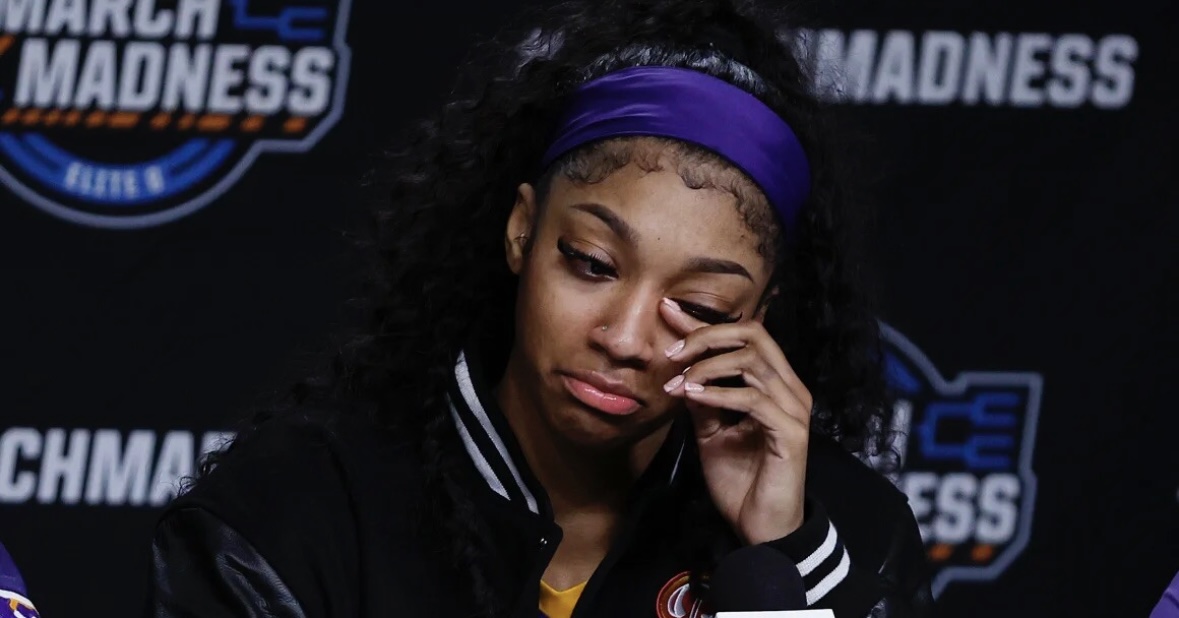Written by: Janice Gassam Asare, Ph.D.

Sports analyst Emmanuel Acho recently drew public ire for what many have called a biased analysis of 21-year-old Louisiana State University (LSU) basketball player Angel Reese. In a press conference after the defeat of the LSU women’s basketball team in the NCAA Elite Eight tournament, Reese shared a heartbreaking account of being attacked, receiving death threats, and being sexualized. Following the press conference, on a Fox Sports show called “Speak”, Acho discussed his thoughts on Reese. After proclaiming that he was going to give a “gender-neutral racially indifferent take,” Acho proceeded to explain, “You can’t be the big, bad wolf but then cry like Courage the Cowardly Dog.” He then went on to say that because Reese is the self-proclaimed villain, she didn’t have the right to ask for sympathy because she had played into the villain role.
Although one of Acho’s cohosts, LeSean McCoy, agreed with his take, his fellow co-host Joy Taylor, pushed back against the assertation that Reese is the self-proclaimed villain. “Who made her the villain? Because someone made her the villain...and it wasn’t her. She was being herself and bragging the way all athletes brag...but we don’t talk about them the way we talk about Angel Reese.” Taylor brought up a valid point that deserves further examination. The treatment of Reese when she behaves in similar ways as other athletes is scrutinized, demonized, and vilified to a greater extent than her counterparts.
On the Higher Learning podcast with Van Lathan and Rachel Lindsay, Lindsay shared her thoughts on Acho’s statements, indicating that Acho has had a pattern of disrespect towards Black people. “Emmanuel Acho is a repeat offender...whenever he seems to be given the opportunity to speak on behalf of, I’ll just say, Black women, he does so in this manner.” Lindsay went on to say, “There seems to have been this huge shift, in my opinion, in how he talks about Black people and as I said, Black women. And I don’t know if he is trying to pander to a specific audience or if he’s doing this because he wants to seek attention however he can get it, or if it’s some kind of mixture of both.”
“What’s problematic is he ignored Angel’s statements on death threats, AI-generated porn, and her ‘emotional well-being’ in his self-styled analysis,” shared anti-racism educator and equity advisor Denise Branch. “No amount of ‘unsportsmanlike conduct’ justifies prompting a response of comparing a Black woman to a dog, dehumanizing her, and showing your audience her psychological and physical well-being does not matter. Society’s disrespect of Black women allows even Black men not to hear our pain and neglect respecting and protecting us while joining in as another hand of oppression towards us...there is ample evidence that much of America misses the mark when it comes to the respect and well-being of Black women,” Branch explained.
It's foolish to suggest that race and gender can be removed from the conversation because Black women’s experiences are marred by gendered racism. Many people were quick to criticize Acho’s perspective online, pointing out the bias and misogynoir laden in his commentary and Acho eventually took to X, not to issue a formal apology, but to thank those who “respectfully reprimanded” him about his statements. As a Black man, and someone who has facilitated a series of “uncomfortable conversations” about race, one would expect Acho to be more understanding and compassionate towards a young Black woman who is displaying her vulnerability and sharing how she’s been affected by the traumatic experiences she’s endured. But instead, Acho joined the long line of media professionals who engage in misogynoir and contribute to the dehumanization of Black women.
There is a long history of media misogynoir in sports. Before her retirement, Serena Williams was constantly a victim of vitriolic commentary about her looks, with one Australian cartoonist drawing a racist caricature of her and a Romanian TV host comparing Williams to a monkey. A recent Forbes article by Shaun Harper highlighted the racism that the LSU women’s basketball team has experienced due to their predominantly Black makeup and compared to other women’s college basketball teams. The media mistreatment of Black female athletes like Sha’Carri Richardson, Simone Biles, Gabby Douglas, and Naomi Osaka is not a new phenomenon—nearly 30 years ago, three-time Olympian Dominique Dawes experienced subtle critiques about her body compared to her white counterparts, and 17 years ago, radio personality Don Imus made headlines after calling members of Rutgers’ predominantly Black women’s basketball team “nappy-headed hos.” In addition to the misogynoir that Black women face, colorism, featurism, and texturism intensifies the gendered racism that Black women endure.
Outside of sports, Black women and girls continue to experience misogynoir in the media. Aside from the flat-out racist commentary about her appearance (being labeled as an “ape in heels” and a chimpanzee, for example), the former First Lady Michelle Obama frequently experienced racism and hyper-scrutiny by the media. In 2020, two journalists criticized the facial features of Beyoncé and Jay-Z’s then 7-year-old daughter Blue Ivy, with one journalist commenting on how Blue Ivy would get Jay-Z’s “face genes” and the other tweeting that Blue Ivy would likely “get plastic surgery” as a result of looking like her father. Two adult journalists seeing no problem with critiquing the looks of a 7-year-old child is a jarring example of how the media misogynoir starts at an early age for Black women.
Photo credit: Sarah Stier/Getty Images